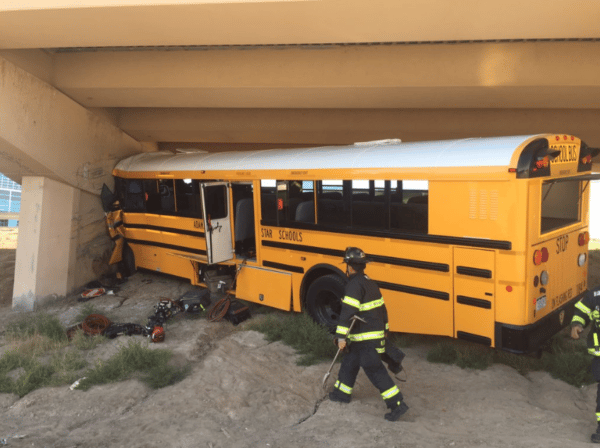
The crash that killed a Legacy High School bus driver earlier this month and sent 18 others to the hospital has renewed a conversation about seat belts on school buses.
Colorado doesn't appear to have a statewide policy on large school buses being equipped with seatbelts. And the federal government is sending mixed messages on whether strapping students in would make them safer.
Denver public school buses have lap belts and some of the districts recently ordered buses have three-point seat belts that go across the chest, according to Nicole Portee, executive director of transportation services.
But in most cases students are not mandated to use those seatbelts, Portee said.
The Colorado Department of Education recently told the Broomfield Enterprise that there are three rules related to seat belts: School bus drivers must be fastened in; there can't be more students than seats; and all passengers in a school transportation vehicles under 10,000 pounds must buckle up.
None of those rules require students riding in larger school buses that weigh more than 10,000 pounds to wear seat belts.
This spring the head of the National Association of State Directors of Pupil Transportation Services wrote in a letter to members that the federal government "favors state and local efforts to find ways to fund and implement the installation of three-point lap/shoulder belts in new school buses."
That conflicts with past messaging that school buses are one of the safest modes of transportation in the U.S. and don't require seat belts.
"(The National Highway Traffic Safety Administration) decided that the best way to provide crash protection to passengers of large school buses is through a concept called 'compartmentalization,'" the organization's website states.
"This requires that the interior of large buses provide occupant protection such that children are protected without the need to buckle-up. Through compartmentalization, occupant crash protection is provided by a protective envelope consisting of strong, closely-spaced seats that have energy-absorbing seat backs."
According to the federal government, people are more likely to die by being struck by a bus versus riding in one.
Business & data reporter Adrian D. Garcia can be reached via email at [email protected] or twitter.com/adriandgarcia.
Subscribe to Denverite’s newsletter here bit.ly/DailyDenverite.













